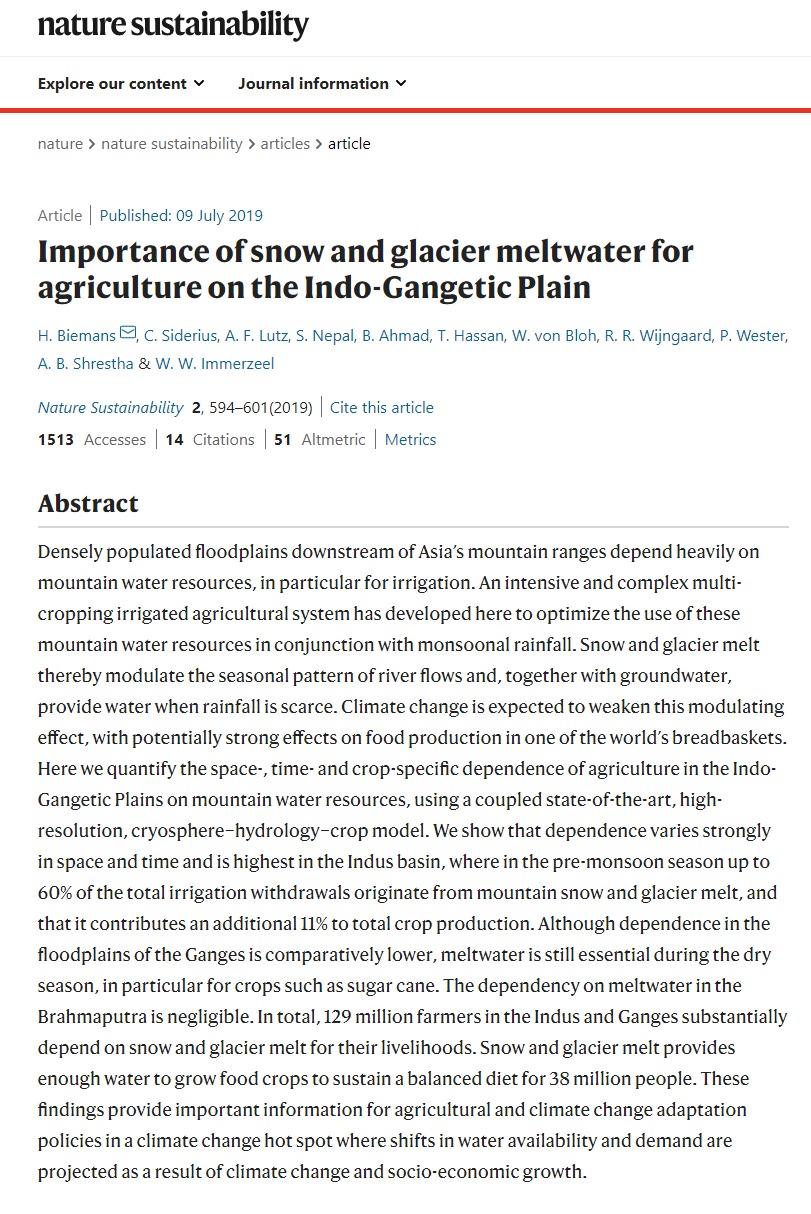
Densely populated floodplains downstream of Asia’s mountain ranges depend heavily on mountain water resources, in particular for irrigation. An intensive and complex multi-cropping irrigated agricultural system has developed here to optimize the use of these mountain water resources in conjunction with monsoonal rainfall. Snow and glacier melt thereby modulate the seasonal pattern of river flows and, together with groundwater, provide water when rainfall is scarce. Climate change is expected to weaken this modulating effect, with potentially strong effects on food production in one of the world’s breadbaskets. Here we quantify the space-, time- and crop-specific dependence of agriculture in the Indo-Gangetic Plains on mountain water resources, using a coupled state-of-the-art, high-resolution, cryosphere–hydrology–crop model. We show that dependence varies strongly in space and time and is highest in the Indus basin, where in the pre-monsoon season up to 60% of the total irrigation withdrawals originate from mountain snow and glacier melt, and that it contributes an additional 11% to total crop production. Although dependence in the floodplains of the Ganges is comparatively lower, meltwater is still essential during the dry season, in particular for crops such as sugar cane. The dependency on meltwater in the Brahmaputra is negligible. In total, 129 million farmers in the Indus and Ganges substantially depend on snow and glacier melt for their livelihoods. Snow and glacier melt provides enough water to grow food crops to sustain a balanced diet for 38 million people. These findings provide important information for agricultural and climate change adaptation policies in a climate change hot spot where shifts in water availability and demand are projected as a result of climate change and socio-economic growth.